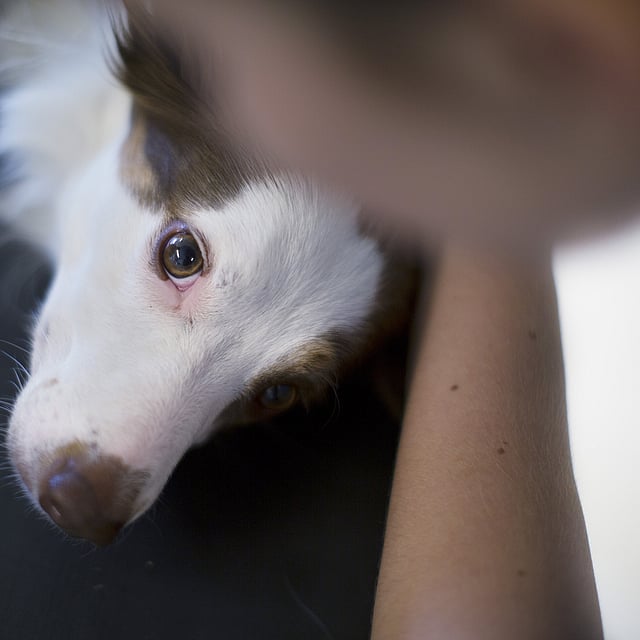An MRI scan uses a strong magnetic field and high-frequency fields. This method allows outstanding soft tissue contrast. Compared with computed tomography, for example, bone is not a barrier. It is thereby possible to image the brain or spinal cord, which are completely surrounded by bone.
Since the method works only with magnetic fields and not with X-rays, the patient is not exposed to any X-radiation during this examination. Typical knocking sounds occur during the MRI scan.
What happens with the dog during the scan?
The dog is placed under general anaesthetic as there must be no movement during the scan, which lasts 30 to 45 minutes. Otherwise, assessment of the images will not be possible. However, as the patient only has to lie on the table and there are no other manipulations, the anaesthesia can be very mild.
The dog is usually placed lying on its back on the table. This table then passes into the magnetic tube and the patient remains there throughout the examination. The advantage is that the patient is asleep and so is not aware of the loud noises. The claustrophobic feeling of having to lie in a narrow tube, which can be quite a problem in human medicine, is also abolished.
The radiologist then plans certain overview scans of the region being examined. The actual sequences are then planned. There are specific sequences for every question. These special sequences help the radiologist to distinguish normal physiological from pathological structures following the scan.
The scans are then reported on so the animal’s owner can be told the result of the examination. This is usually done in a personal discussion and the scan images can also be discussed if the owner wishes.
In some cases a second opinion can be necessary when the vet would like to obtain another opinion.
Preparation for an MRI scan
The anaesthesia referred to above is essential to obtain adequate images. The patient must be fasting for this. It is also important that the patient has no metal in its body. This can be due, for example, to previous surgery of a fracture treated with a surgical steel plate. This plate can cause artefacts and make it impossible to assess the scan.
What can be examined with an MRI scan?
Since MRI provides outstanding soft tissue contrast, all types of soft tissue, ligament and tendon structures, such as those in the knee or shoulder and elbow region, can be imaged. The main task in veterinary medicine, however, is in the neurological investigation of processes in the brain (neoplasms, haemorrhage) and spinal cord (prolapsed disc, fibrocartilaginous embolism etc.).
© AniCura, Dr. Roland Gottinger
